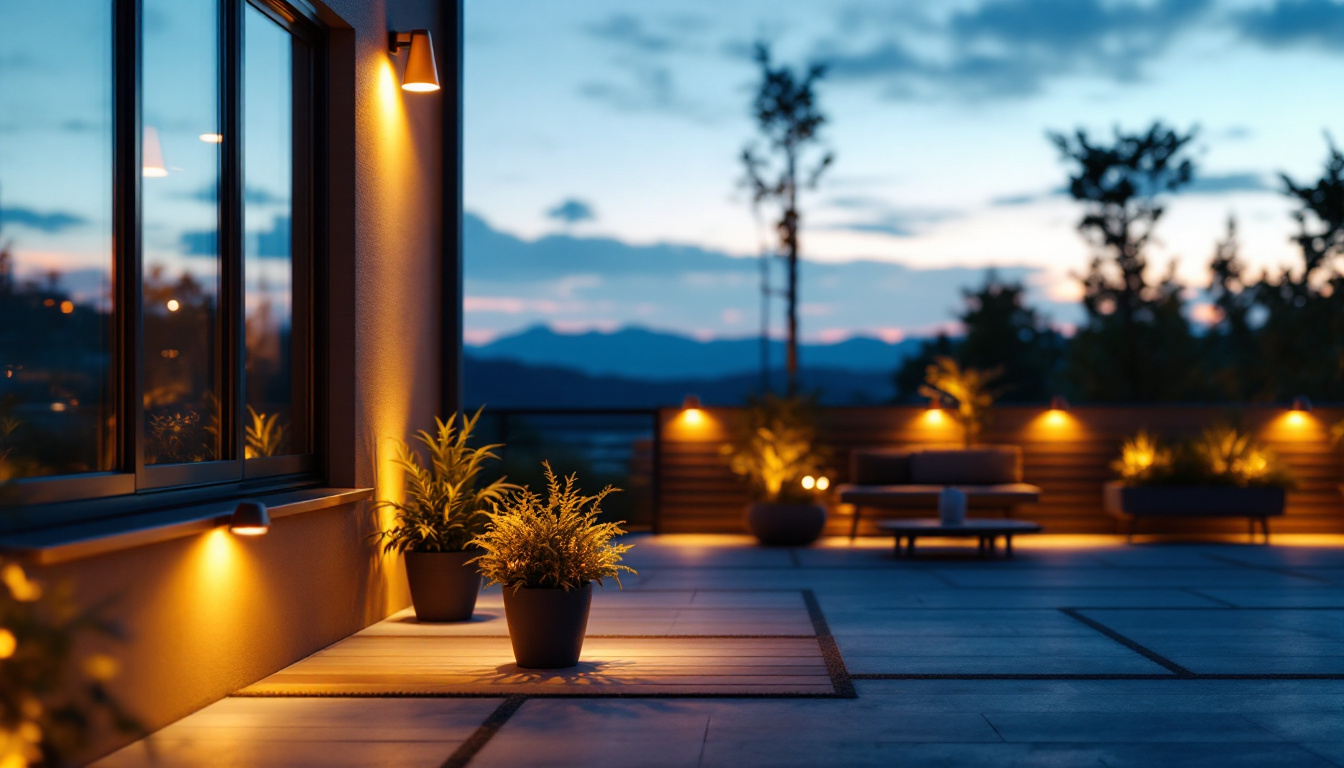
In the ever-evolving world of lighting design and installation, the term “LED foot” has emerged as a crucial concept for lighting contractors. This term refers to the practice of utilizing LED technology in lighting projects, which can significantly impact both operational efficiency and profitability. Understanding how this technology affects the bottom line is essential for contractors looking to stay competitive in the market.
LED lighting has transformed the landscape of the lighting industry. With its energy efficiency, longevity, and versatility, LEDs have become the preferred choice for both residential and commercial applications. As the demand for sustainable and cost-effective lighting solutions continues to grow, contractors must adapt to these changes to maintain their market position.
One of the most significant advantages of LED technology is its energy efficiency. Unlike traditional incandescent bulbs, which convert only a fraction of energy into light, LEDs utilize a higher percentage of energy for illumination. This efficiency translates into lower electricity bills for clients, making LED installations a more attractive option.
For lighting contractors, promoting the energy-saving benefits of LEDs can lead to increased sales. Clients are often drawn to the prospect of reduced operational costs, which can be a compelling selling point. Additionally, as more municipalities and organizations adopt energy-efficient standards, the demand for LED installations is likely to rise. Furthermore, many regions offer incentives or rebates for switching to LED lighting, which can further entice clients to make the switch. These financial benefits not only help in closing sales but also contribute to a greener environment, aligning with the values of eco-conscious consumers.
LED lights boast an impressive lifespan, often exceeding 25,000 hours compared to traditional bulbs that may last only 1,000 hours. This longevity not only reduces the frequency of replacements but also minimizes maintenance costs for clients. For contractors, this means fewer service calls and a more streamlined operation.
Incorporating LEDs into projects can enhance a contractor’s reputation for reliability and quality. Clients appreciate the reduced need for maintenance, which can lead to repeat business and referrals. By positioning themselves as experts in LED technology, contractors can build a loyal customer base that trusts their recommendations. Moreover, the durability of LEDs means they are less prone to breakage, making them ideal for high-traffic areas or outdoor settings where traditional bulbs might fail more frequently. This resilience not only provides peace of mind for clients but also allows contractors to offer warranties that further solidify their commitment to quality and customer satisfaction.
While the initial cost of LED fixtures may be higher than traditional lighting options, the long-term benefits often outweigh these upfront expenses. Contractors must effectively communicate this value proposition to clients who may be hesitant to invest in LED technology. The energy efficiency of LEDs translates into lower electricity bills, which can result in substantial savings over time. Additionally, the durability of LED lights means fewer replacements and less frequent maintenance, further contributing to cost savings.
Many clients may not be aware of financing options or incentives available for energy-efficient upgrades. Local governments and utility companies often provide rebates or tax incentives for installing LED lighting, which can significantly reduce the overall project cost. Contractors who stay informed about these programs can help clients navigate the financial landscape, making LED installations more accessible. Furthermore, some financial institutions offer green loans specifically designed for energy-efficient upgrades, allowing clients to spread the cost over time while enjoying immediate savings on their energy bills.
By offering financing solutions or partnering with organizations that provide incentives, contractors can facilitate the decision-making process for clients. This proactive approach not only boosts sales but also positions contractors as knowledgeable partners in the lighting upgrade journey. Additionally, educating clients about the environmental benefits of LED technology, such as reduced carbon footprints and lower greenhouse gas emissions, can resonate with those who are environmentally conscious, making the investment feel more worthwhile.
Calculating the return on investment for LED installations is crucial for convincing clients of their value. By presenting clear data on energy savings, reduced maintenance costs, and extended lifespans, contractors can help clients see the long-term financial benefits. A well-prepared ROI analysis can serve as a powerful tool in closing sales and securing contracts. It may also be beneficial to include case studies or testimonials from previous clients who have experienced significant savings after switching to LED lighting, as real-world examples can often be more persuasive than theoretical calculations.
Moreover, as the market continues to shift towards sustainability, clients may find that investing in LED technology enhances their brand image. Companies that prioritize energy efficiency often attract environmentally conscious consumers, further boosting their bottom line. This shift not only reflects a growing consumer preference for sustainable practices but also aligns with corporate social responsibility goals, which are increasingly important in today’s market. By highlighting these aspects, contractors can appeal to clients’ desire to be part of a larger movement towards sustainability, making the investment in LED lighting not just a financial decision, but a strategic one as well.
Understanding market trends is essential for lighting contractors aiming to remain competitive. As consumer preferences evolve, so too must the strategies employed by contractors to meet these demands.
The integration of smart technology with LED lighting has become increasingly popular. Consumers are now looking for solutions that offer convenience, control, and energy management. Smart LEDs can be programmed to adjust brightness, color temperature, and even turn on or off based on occupancy.
Contractors who are knowledgeable about smart lighting solutions can differentiate themselves from competitors. By offering comprehensive packages that include both LED and smart technology, contractors can cater to the growing demand for intelligent lighting systems, enhancing their service offerings and profitability.
Another trend influencing consumer preferences is the desire for customizable and aesthetically pleasing lighting solutions. LEDs are available in various shapes, sizes, and colors, allowing for creative designs that can enhance any space. Contractors who embrace this flexibility can provide tailored solutions that meet the unique needs of their clients.
Moreover, showcasing successful projects that highlight the design capabilities of LED lighting can serve as effective marketing tools. By sharing case studies and testimonials, contractors can build credibility and attract new clients who are seeking innovative lighting solutions.
Despite the numerous benefits associated with LED technology, contractors may face challenges that can impact their bottom line. Understanding these obstacles is crucial for developing effective strategies to overcome them.
The rise in popularity of LED lighting has led to increased competition among contractors. As more companies enter the market, pricing pressure can become a significant concern. Contractors must find ways to differentiate their services and justify their pricing to maintain profitability.
Focusing on quality, customer service, and expertise can help contractors stand out in a crowded market. By emphasizing the value of their services and the long-term benefits of LED installations, contractors can mitigate the impact of pricing competition.
The rapid pace of technological advancements in the LED industry can pose challenges for contractors. Staying updated on the latest products, trends, and installation techniques is essential for maintaining a competitive edge. Contractors who invest in ongoing education and training can better serve their clients and adapt to changing market demands.
Additionally, establishing relationships with reputable suppliers can provide contractors with access to the latest innovations in LED technology. By collaborating with manufacturers, contractors can ensure they are offering the best products available, further enhancing their reputation.
In the lighting industry, strong client relationships are key to long-term success. Contractors who prioritize communication and transparency can foster trust and loyalty among their clients.
Many clients may not fully understand the advantages of LED technology. Taking the time to educate clients about the benefits of LEDs, including energy savings, longevity, and design flexibility, can empower them to make informed decisions. Providing resources, such as brochures or online content, can enhance the client experience and position contractors as trusted advisors.
Moreover, offering consultations and personalized recommendations can help contractors build rapport with clients. By demonstrating a genuine interest in their needs and preferences, contractors can create lasting relationships that lead to repeat business and referrals.
Providing exceptional after-sales support is another crucial aspect of building strong client relationships. Following up with clients after installation to ensure satisfaction and address any concerns can leave a positive impression. This proactive approach not only enhances customer satisfaction but also opens the door for future projects.
Additionally, soliciting feedback from clients can provide valuable insights into areas for improvement. By actively seeking input and making adjustments based on client preferences, contractors can continuously refine their services and strengthen their reputation in the industry.
The shift towards LED technology presents both opportunities and challenges for lighting contractors. By understanding the financial implications of LED installations and adapting to market trends, contractors can position themselves for success in a competitive landscape.
Emphasizing energy efficiency, longevity, and design flexibility can help contractors effectively communicate the value of LEDs to clients. Moreover, building strong relationships through education, support, and transparency can lead to lasting partnerships that drive profitability.
As the lighting industry continues to evolve, embracing the LED revolution is essential for contractors seeking to enhance their bottom line. By staying informed, adapting to changes, and prioritizing client satisfaction, contractors can thrive in this dynamic market.
Ready to enhance your lighting projects while boosting your bottom line? Look no further than LumenWholesale for a superior selection of spec-grade LED lighting products. Our commitment to quality and affordability ensures you receive the best value on the market. Say goodbye to local distributor markups and hello to unbeatable wholesale prices, free shipping, and the convenience you deserve. Elevate your lighting game with LumenWholesale and make every installation shine. Discover the difference and start saving today by visiting our extensive collection at Wholesale Lighting at the Best Value.

Discover the common pitfalls lighting contractors face in wholesale lighting projects.

Discover the transformative benefits of garage ultraviolet light for lighting contractors.

Discover the role of electrical ballast in lighting systems and explore top strategies from leading contractors to optimize efficiency and performance.

Illuminate your projects with expert insights on outside pot lights.